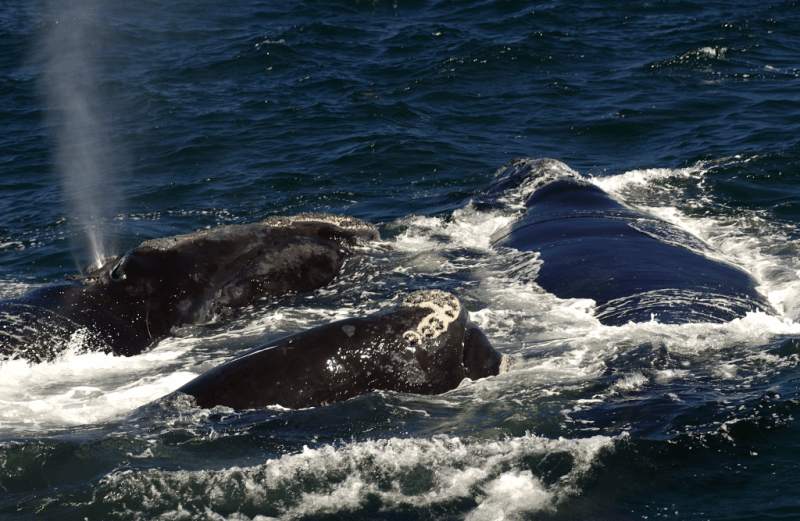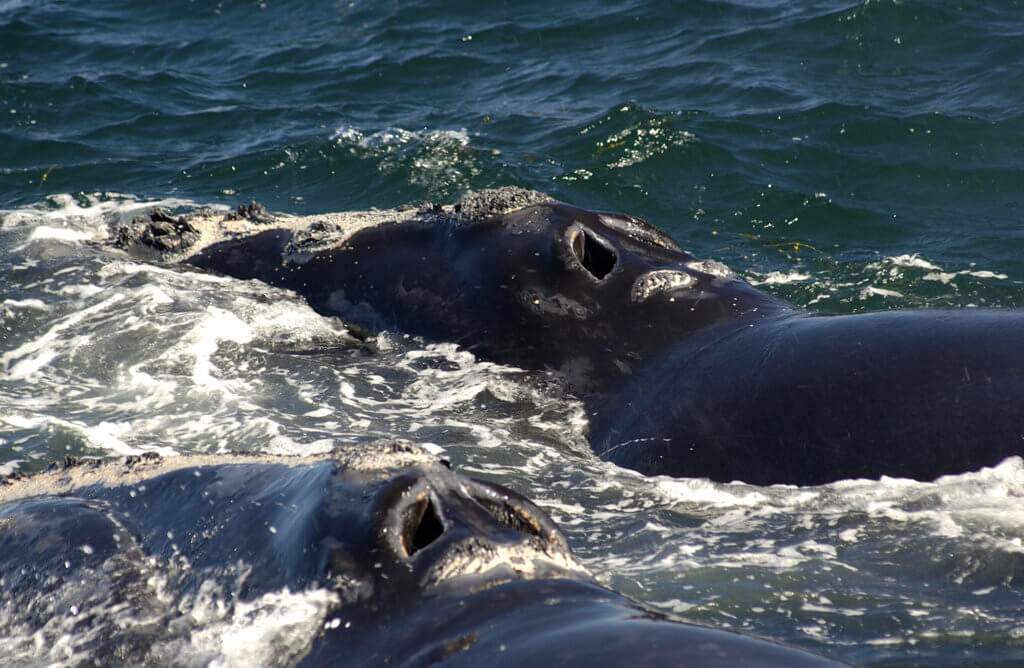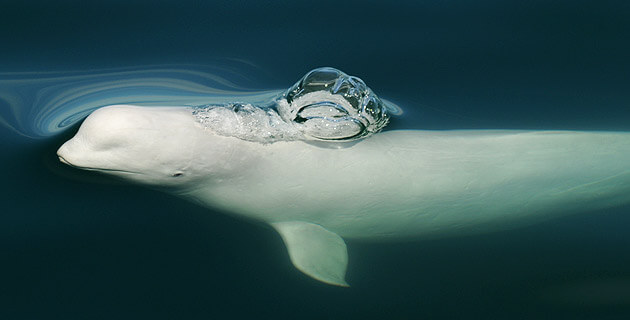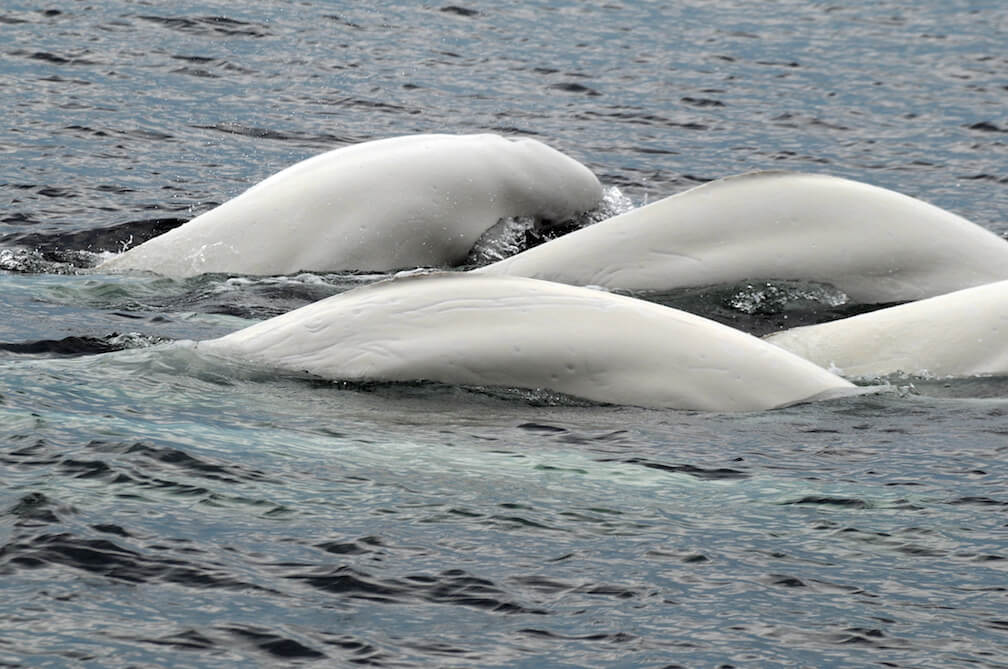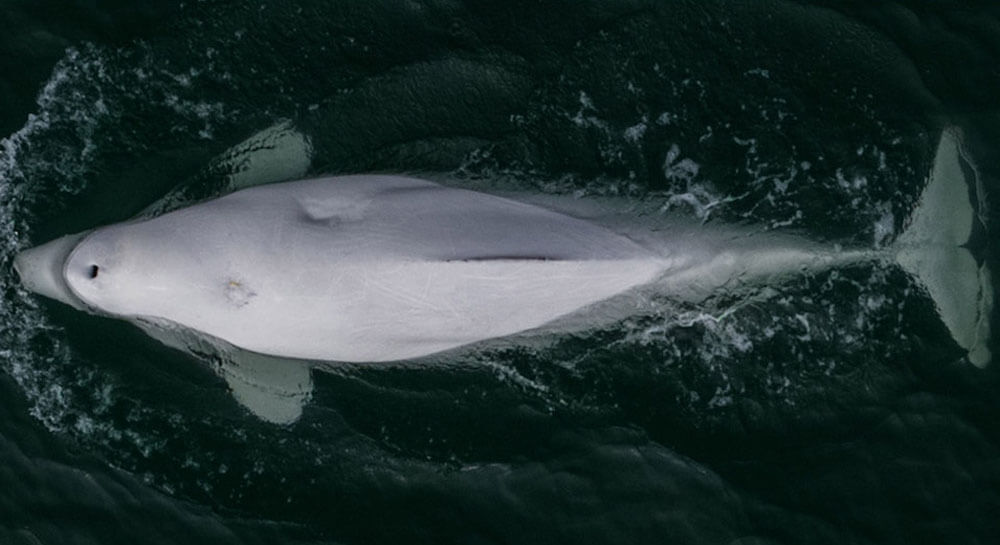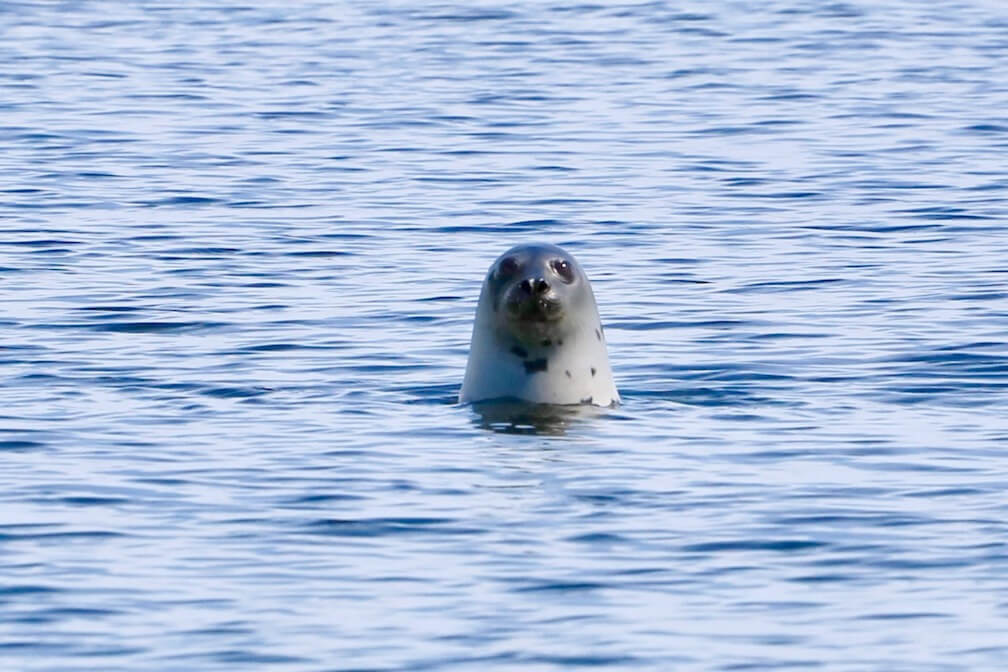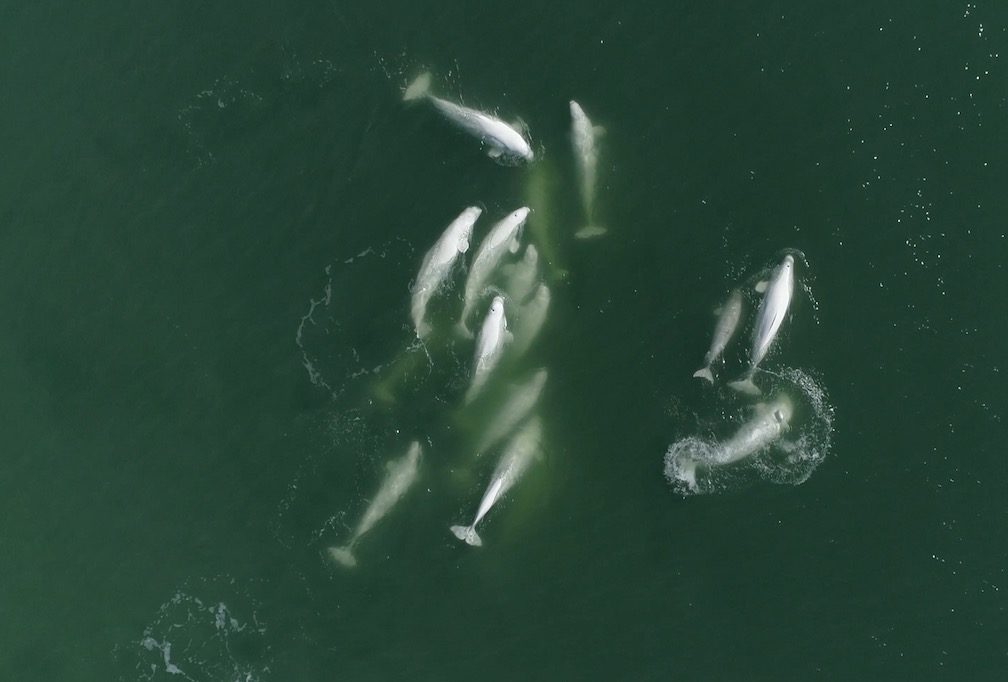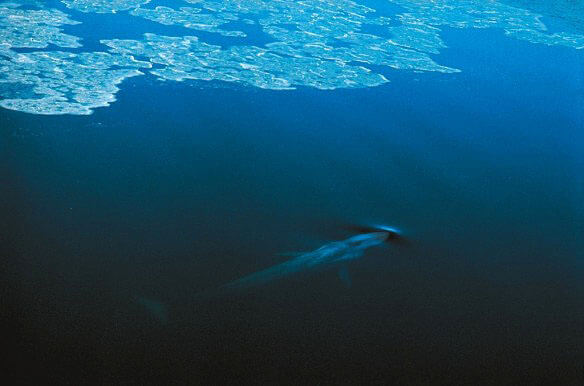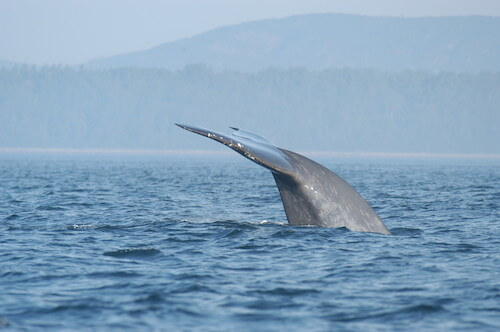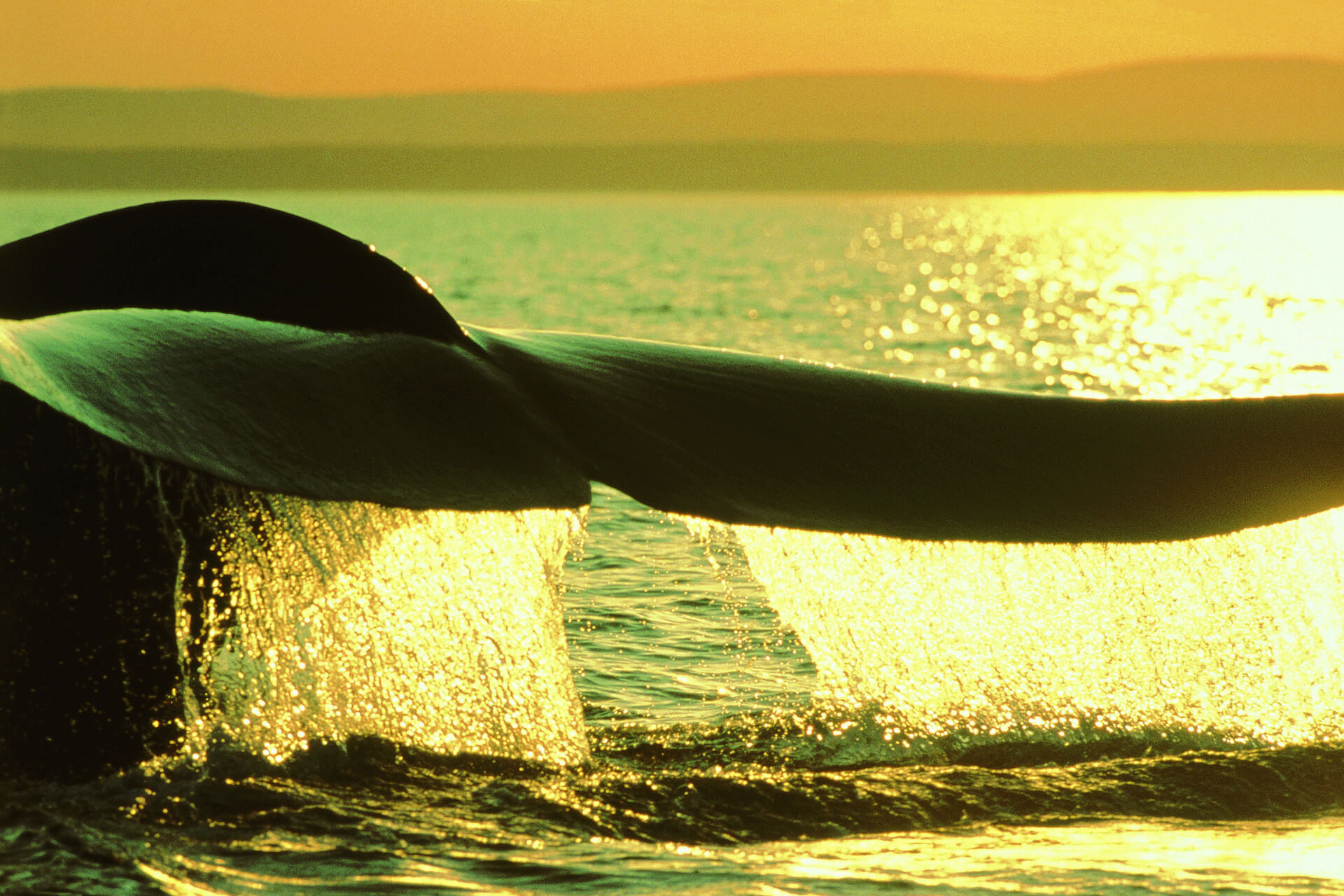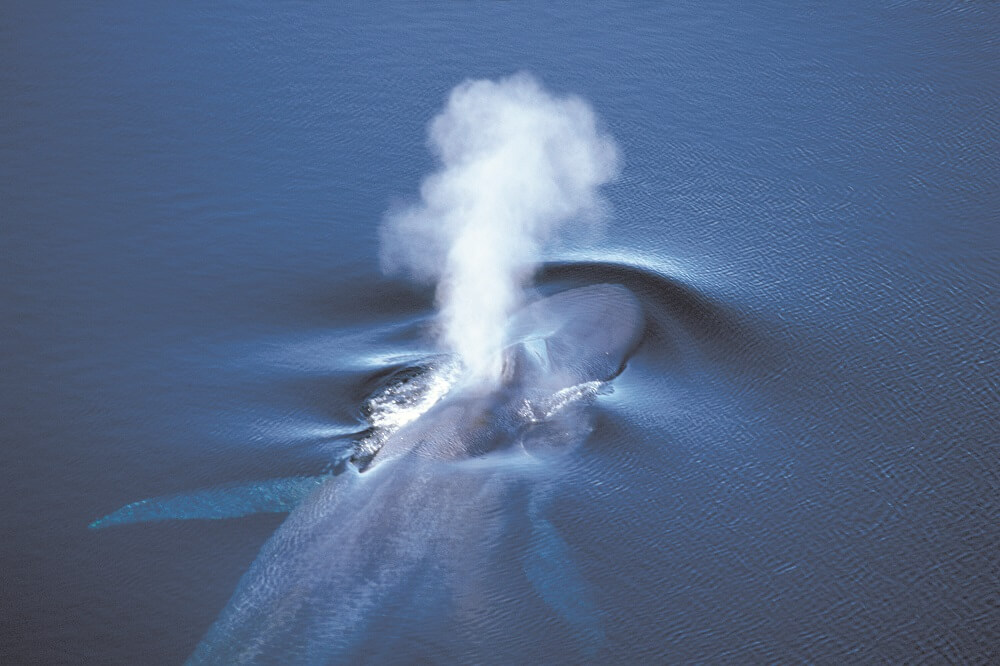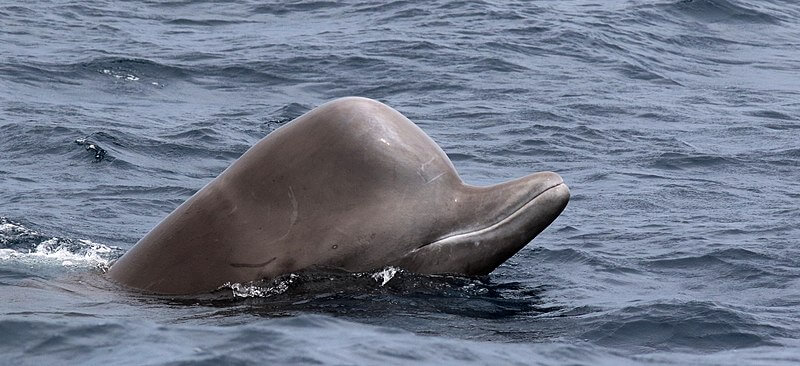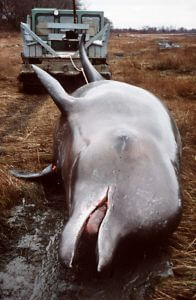Hunting
Blue whale hunting in the early 20th century greatly reduced the population of this titan in the North Atlantic. About 1,500 blue whales were hunted in Eastern Canadian waters between 1898 and 1951, including 80 to 100 by a whaling station established in Sept-Îles, Quebec, between 1911 and 1915. In total, 11,000 blue whales are believed to have been harvested in the North Atlantic between the end of the 19th century and 1960. Few blue whales were hunted in Eastern Canada after 1951; in fact, the International Whaling Commission (IWC) has prohibited the harvest of this species in the North Atlantic since 1955.
Ice entrapment
Blue whales occasionally get trapped in ice in winter and die. Between 1869 and 1992, no fewer than 41 blue whales found themselves imprisoned by ice along the west coast of Newfoundland. In 77% of the cases, the incidents were fatal for the animals. The St. Lawrence blue whale photo-identification program shows that some blue whales of this population bear scars on their backs evidently caused by ice. Some individuals linger in the Gulf of St. Lawrence in winter to take advantage of the shoals of plankton that accumulate at the edge of the ice. Shifting with the winds and the currents, these ice sheets can form deadly traps.
Predation
The only known predator of the blue whale is the killer whale, a cetacean that sometimes preys on other marine mammals. Few St. Lawrence blue whales bear the “rake” marks usually left by a killer whale attack and no such attack has ever been reported in this region. Predation is therefore probably not a very significant cause of mortality for blue whales in the Northwest Atlantic.
Anthropogenic threats presenting high risk
Anthropogenic noise: degradation of the acoustic environment and changes in behaviour
Seeing their environment, finding prey, communicating with other members of their species… blue whales use very low-frequency sounds for a number of their essential activities. However, increasing ambient noise compromises the transmission of these acoustic signals. In the pre-industrial era oceans, the call of a blue whale could be heard over distances of 100 to 1000 nautical miles, whereas today, communication might be reduced to just 10 to 100 nautical miles. The chances of communicating with their peers and the ability to perceive their environment are thus reduced; essential activities like feeding, social interactions, caring for young, etc. can be interrupted; and critical habitats can be avoided in the short or long term.
The St. Lawrence Estuary and the Gulf of St. Lawrence are highly important routes for shipping and, as such, represent a noisy aquatic environment. The sounds emitted by blue whales in the sector seem to lie in a broader range of frequencies than that observed in other regions of the Northwest Atlantic. Researchers have hypothesized that these differences may be caused by the high ambient noise levels in the St. Lawrence, which might be forcing blue whales to modify the frequency of their signals in order to increase their chances of detection by other blue whales. Further, seismic exploration and oil and gas extraction on the Canadian East Coast, notably east of Newfoundland and on the Scotian Shelf, are activities that can impact cetacean behaviour (e.g. modification of migratory routes, swimming speed, dive profiles, feeding).
Food availability
The increased presence of krill-consuming pelagic fish species (capelin, herring) might limit the availability of this food resource for blue whales. In recent decades, the distribution and abundance of these fish have considerably changed in the St. Lawrence Estuary and the Gulf of St. Lawrence following declines of their predators, the Atlantic cod and redfish, both of which have been overfished. Commercial krill fishing in the Gulf of St. Lawrence for the nutraceutical industry might also reduce the availability of this food resource for the blue whale. This fishery has been prohibited in Eastern Canada since 1998, however. Lastly, climate change might trigger modifications in the ocean climate, which could also have an influence on krill abundance.
Anthropogenic threats presenting moderate risk
Contaminants
Considerable concentrations of PCBs and pesticides have been measured in blue whales in the St. Lawrence. Pesticide and PCB levels were analyzed from fat samples taken from 38 males and 27 females in the Gulf between 1992 and 1999. These analyses brought to light significant differences between males and females, the latter presenting lower concentrations due to mothers transferring contaminants to their calves during gestation and nursing. Concentrations of persistent contaminants measured in the fat of blue whales were approximately half of those measured in belugas in the St. Lawrence Estuary, which might be attributable to the fact that blue whales frequent the region more intermittently and feed at a lower level of the food chain (preying on krill) than do toothed whales. Contaminant concentrations in young are often similar to those of their mothers, which raises concern about the toxicological impacts of exposure to contaminants in the first stages of the whales’ lives, periods during which the animals are most vulnerable. Is there a correlation between the low number of calves observed in the St. Lawrence and contamination? Investigation continues.
Ship strikes
In 2003, nearly 12,000 ships passed through the St. Lawrence Estuary between Sept-Îles and Les Escoumins. The routes taken by these vessels run through areas heavily used by blue whales. At least 5% of the blue whales frequenting the St. Lawrence bear deep wounds and/or scars attributable to a contact with the propeller or hull of a ship. Despite limited evidence of mortalities caused by ship strikes, the relatively high number of blue whales showing scars potentially related to such collisions indicates that this threat is real and possibly significant, all the more so in that given the low number of blue whales in the Northwest Atlantic, the loss of a few individuals per year may represent a significant obstacle to this population’s recovery.
Whale watching activities
An important marine mammal-watching industry exists in the St. Lawrence Estuary and the Gulf of St. Lawrence. A study conducted in the Estuary on the fin whale, a relative of the blue whale, revealed that if a large number of boats are present, they will shorten their dive times and possibly the time dedicated to hunting prey. Doing so may reduce the quantity of food that the whales capture, compromise their ability to build reserves, and possibly lower their chances of survival or reproductive success. A project launched in 2002 attempts to assess blue whale reactions to the presence of boats.
Anthropogenic threats presenting low risk
Anthropogenic noise: physical damage
In addition to sometimes masking the sounds produced by blue whales and affecting their behaviour, loud or prolonged noise may also trigger temporary or permanent changes in hearing thresholds, production of stress hormones, and physical damage such as internal injuries that can lead to death. The highest noise levels are usually registered during seismic exploration or the use of low-frequency active sonar systems.
Bycatch in fishing gear
Throughout the world, hundreds of thousands of cetaceans get caught and die every year in fishing gear. In the St. Lawrence, at least three blue whales were lost to gillnets since 1979 and nearly 10% of blue whales show scars attributable to fishing gear. Further, no fewer than five cases of entangled but free-swimming animals have been reported since 1990.
Epizootics and toxic algal blooms
In the North Atlantic, occurrences of mass marine mammal mortality caused by disease seem to have been increasing since the latter half of the 20th century, and can have serious consequences on a population with low numbers like that of the Northwest Atlantic blue whale. This increase in disease is believed to be attributable, amongst other things, to a fluctuating climate and to anthropogenic habitat degradation and pollution. However, this threat is still poorly documented.
Cetacean poisoning from toxic algae seems to be increasingly frequent in all the world’s oceans. In August 2008, nearly a dozen belugas and harbour porpoises died in the St. Lawrence Estuary following a red tide episode caused by the alga Alexandrium tamarense. The magnitude that this natural phenomenon reached is probably due to the particularly abundant precipitations registered in the summer of 2008 that led to higher temperatures and lower salinity of the surface waters. Therefore, global warming and the ensuing alteration of rainfall patterns may result in an increase in algal blooms, making this phenomenon a more significant threat to the blue whale.
Toxic spills
The impacts of a toxic spill on blue whales are highly variable and difficult to evaluate. Although most cetaceans avoid oil slicks on the water surface, they may accidentally enter into contact with them. Even if the skin of cetaceans is an effective barrier, toxic vapours may damage sensitive tissues such as the membranes of the eyes, mouth and lungs. Moreover, marine mammals can ingest spilled products, either directly or through contaminated prey, which may trigger any of various toxic and physiological effects.





